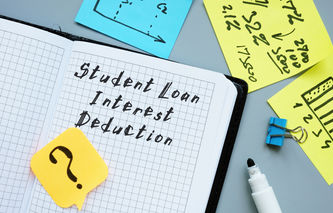Each year, new student loan interest rates are published. Overall, rates have been relatively low; nothing like those that existed back in the early 1980s. That's good news for students because even though they can do very little to control the rising cost of tuition at their colleges, at least the interest rate on their student loans are reasonable.
Student Loan Loophole
The federal government is starting to pay more attention to student loans, and the interest rate charged on those loans. We talked about the student loan loophole, which funneled billions of dollars into the hands of lending institutions by subsidizing low interest rate loans. The Student Aid Reward Act has the potential to save taxpayers billions of dollars, while putting more money to work for students in the form of additional funds for loans.
Current Student Loan Interest Rates
The interest rates we're going to talk about are for student loans that were disbursed starting on, or after, July 1, 1998. Interest rates also change annually, so this article will be addressing the time period from July 1, 2020 through June 30, 2021.
Direct Loans
Direct Student Loans are one of the Federal Student Aid, or FSA, programs that are available through the Department of Education. Direct Student Loans provide students with a way to borrow money to pay for their costs of higher education.
The interest rates for loans taken, or disbursed, on or after July 1, 2020 carry a 2.75% fixed rate of interest.
Direct or Federal PLUS Loans
Federal PLUS loans, which are also known as Direct PLUS loans, are taken out by the parents of students. The abbreviation PLUS stands for Parent Loan for Undergraduate Student. These are federally-insured loans parents can take out to pay for a dependent's education.
For the time period July 1, 2020 through June 30, 2021, the interest rate for new PLUS loans are 5.30%. The interest rate on PLUS loans will vary from year to year, but will never exceed 9.00%.
Stafford Loans
Federal Stafford loans follow the same guidelines as Direct Loans. The interest rate on a Stafford loan is based on the 91-day Treasury bill rate, with the exact formula being:
For in-school, grace, and deferment periods - the 91-day T-bill rate + 1.70%
During repayment periods - The 91-day T-bill rate + 2.30%
Note: As a result of the Health Care and Education Reconciliation Act of 2010, FFEL Stafford Loans are no longer made by private lenders.
Consolidation Loans
Federal consolidation loans are just that; the consolidation of multiple loans into one monthly payment. This means the exact interest rate on these loans needs to be calculated on an individual basis, using a weighted average calculation approach. A simplified formula for weighted average is:
(Loan 1 ($) x Interest Rate + Loan 2 ($) x Interest Rate) / (Loan 1 ($) + Loan 2 ($))
As a rule of thumb, the consolidated loan interest rate can never be higher than the highest interest rate of an individual loan. It will also never be lower than the lowest interest rate of an individual loan. Borrowers can expect a consolidated loan in the range of 4.75% to 6.125%.
Interest Rates on Private Loans
The interest rates on private loans can be nearly as numerous as the number of agencies writing those loans. In general, private loans in 2020 / 2021 can range from a low of around 6% to as high as 12%.
The exact interest rate will depend on the borrower's credit score, the amount borrowed, and the term or length over which the loan is repaid. As a rule of thumb, the interest rates of these loans are indexed against the Prime lending rate, sometimes referred to as Prime plus.
Student Loan Fees
Under some private student loan programs, the lending institution may charge a loan fee, which is typically stated in terms of a percentage of the loan, just like points on a mortgage. The exact fee paid will depend on the loan program itself, the credit rating of the student, and the interest rate charged.
Student Loan Fee Example
A lender might offer a student a loan with an interest rate of 7.15% and a 1.00% fee. If the student was borrowing $10,000, the fee would be added to the loan's principal. In this example the student would have to pay back $10,100 in principal plus interest at 7.15%.
Anyone thinking about taking out a private student loan, and the lender is charging a fee, can use one of our many mortgage calculators to see the exact impact the fees have on their monthly payments. If there is a choice of paying a fee or a reduced interest rate on the loan, our calculators can help figure out which loan is the best choice; given the exact financial situation and the offer.


